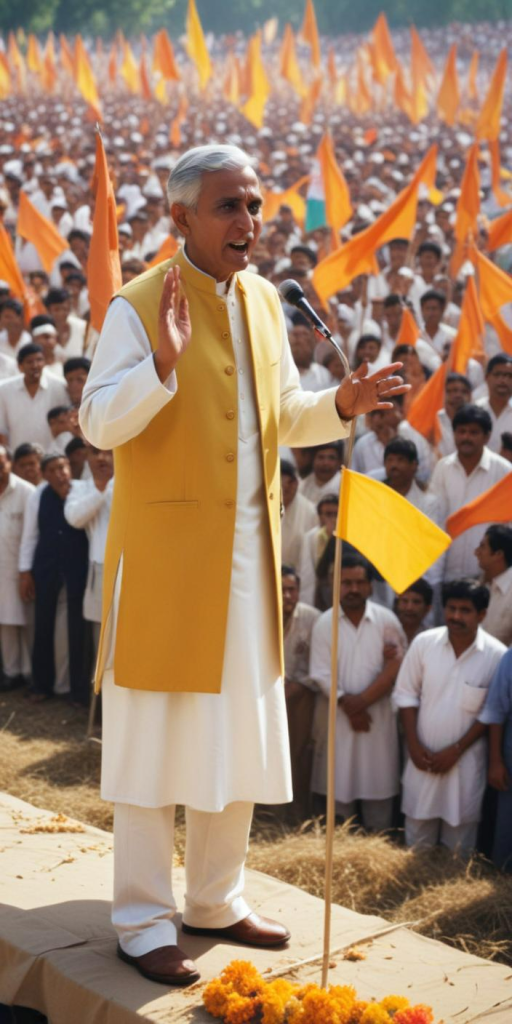by Muhammad Mohsin Iqbal
India, the world’s largest democracy, has held regular elections since gaining independence on 15 August 1947. With over 900 million eligible voters today, Indian elections are often hailed as monumental democratic exercises. However, a critical examination of India’s electoral history reveals a disturbing pattern; the deliberate creation of external threats—primarily through engineered tensions with Pakistan—to secure emotional, nationalistic votes. This electoral strategy has consistently influenced Indian political outcomes and destabilized peace in the region.
India held its first general election between 25 October 1951 and 21 February 1952, under the leadership of Prime Minister Jawaharlal Nehru. This was a remarkable democratic feat in a newly decolonized and largely illiterate country. While the Indian National Congress dominated the early decades, the seeds of political opportunism were planted early. As internal challenges grew, so did the temptation to invoke external threats—especially from Pakistan—to consolidate electoral gains.
The first major instance was the India-Pakistan war of 1965, which broke out on 6 September 1965 and ended with a ceasefire on 23 September 1965. Prime Minister Lal Bahadur Shastri emerged from the war as a national hero with his slogan “Jai Jawan Jai Kisan.” Though he died mysteriously in Tashkent on 11 January 1966, soon after signing a peace agreement, the Congress party used the post-war nationalistic wave in its favor during the 1967 general elections.
The 1971 India-Pakistan war, which began on 3 December 1971 and ended with Pakistan’s surrender in Dhaka on 16 December 1971, was another key milestone. Prime Minister Indira Gandhi leveraged India’s military victory to gain immense popularity. The war led to the creation of Bangladesh and was used effectively to project her as the “Iron Lady” of India. In the 1972 state elections and 1977 emergency-driven polls, war heroism was invoked repeatedly, even as authoritarian tendencies crept in.

With the rise of the Bharatiya Janata Party (BJP) in the 1990s, anti-Pakistan rhetoric became a central electoral theme. The Kargil War of 3 May to 26 July 1999, occurring under the BJP-led government of Atal Bihari Vajpayee, came just a year after India’s nuclear tests on 11 and 13 May 1998 and the Lahore Declaration signed on 21 February 1999. Despite intelligence lapses, the BJP won the 1999 general elections, capitalizing on nationalistic fervor.
A deeply tragic and politicized moment came with the Mumbai attacks of 26 November 2008, when some armed persons carried out designed assaults at multiple locations, including the iconic Taj Mahal Hotel, killing over 100 people. Although Pakistan-based groups were swiftly blamed, the timing and handling of the attacks cast a long shadow over the Indian political landscape. As the 2009 elections approached, the Congress-led UPA government hardened its posture, leveraged public anger, and turned the tragedy into a call for stronger security measures. The emotional charge of the attacks, along with media-fueled nationalism, helped deflect attention from internal security failures and re-elect the ruling alliance.
Perhaps the most glaring example came in February 2019, when a suicide attack on Indian paramilitary forces in Pulwama, Jammu & Kashmir, on 14 February 2019 killed 40 soldiers. India launched the Balakot airstrikes on 26 February 2019, and Pakistan responded with its own strikes on 27 February 2019, downing an Indian jet and capturing its pilot. The incident was highly politicized. Prime Minister Narendra Modi’s campaign for the 2019 general elections, held in April–May 2019, was centered almost entirely on national security. The BJP won with a resounding majority.
The latest and perhaps most dangerous escalation occurred on 7 May 2025, when a sudden and intense one-day war erupted between India and Pakistan. Tensions had been brewing for weeks, with provocative statements and military posturing from the Indian side. On the morning of 7 May, Indian jets crossed the Line of Control, prompting retaliatory strikes from Pakistan. The conflict lasted less than 24 hours but claimed dozens of lives and pushed both nuclear-armed neighbors to the brink.
Crucially, this war coincided with India’s general election phase scheduled between 19 April and 7 May 2025. The timing strongly suggests that the ruling party, facing growing criticism over economic stagnation, rising inflation, social unrest, and farmer suicides, resorted to a familiar tactic—manufacturing a military confrontation with Pakistan to divert public attention and invoke emotional nationalism.
The pattern is clear and disturbing. Whenever domestic governance fails to inspire voter confidence, Pakistan is invoked as a threat to national security. The media, often compliant or state-influenced, whips up hysteria, while emotional narratives eclipse economic realities. This short-term political gain comes at the cost of long-term peace, regional cooperation, and the democratic ethos that India claims to uphold.
Since 14 August 1947, when Pakistan formally became independent a day after India, the Sub Continent has seen three full-scale wars (1948, 1965, 1971), one limited war (1999), multiple standoffs, and countless border skirmishes. Each has left scars, consumed resources, and reinforced mistrust. But when conflict is reduced to an electoral strategy, the threat to regional stability becomes existential. The 7 May 2025 one-day war marks the most cynical use of this playbook to date.
India’s electoral history thus reflects not just the growth of democratic institutions but also how electoral politics can be manipulated through war-mongering. It is a warning to all democracies; when nationalism replaces governance, and emotional manipulation takes precedence over policy, elections cease to be instruments of progress and become tools of perpetual conflict.
Therefore, while Indian elections are often celebrated for their scale, they must also be examined for the disturbing trend of militarized nationalism. From the 1971 war to the 2008 Mumbai attacks, from Balakot in 2019 to the one-day war on 7 May 2025, there is a consistent theme: invoking Pakistan as a threat to distract, manipulate, and win votes. The result is a democracy that thrives not on performance or progress but on polarization and paranoia. South Asia deserves better. It is time to break the cycle—and let votes be cast for hope, not hostility.

















